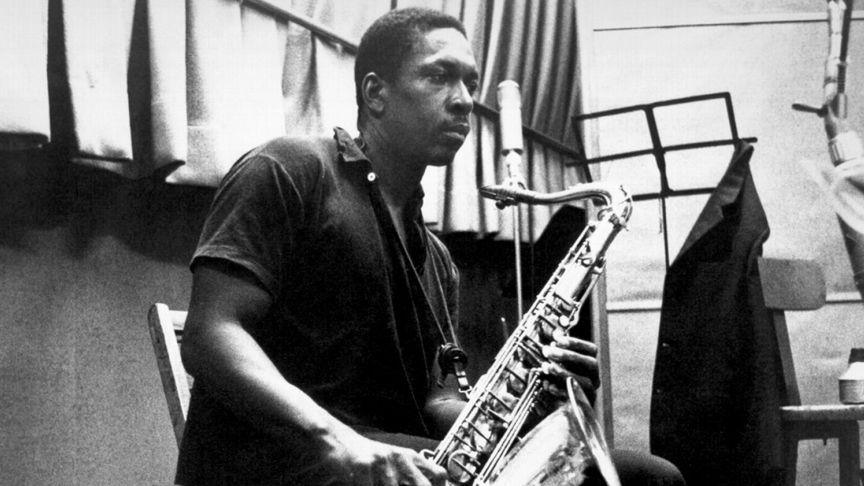He was one of the most influential and acclaimed figures in the history of jazz and 20th-Century music, a sweet saxophone player, band leader, and composer. And now his legacy, along with that of his multi-talented wife, Alice, will live on with the preservation of their former home in Dix Hills thanks to $1.75 million in JumpSMART funding provided by Suffolk County.
Tucked away in a residential neighborhood of Dix Hills, the two-story, brick and wood frame home was where the Coltranes chose to put down roots and raise their family from 1964 to 1973. They wrote and recorded some of their most enduring works in this peaceful suburban setting.
Coltrane’s son, Ravi, CEO and chairman of Friends of the Coltrane Home, was on hand last week to announce the grant, along with county Executive Steve Bellone, Kevin McCaffrey, leader of the Suffolk Legislature’s GOP majority, Jason Richberg, leader of the Democrats, and Legislator Manuel Esteban. The preserved home will feature a recording studio, exhibit space, multifunction space, Love Supreme Room, and Meditation Room.
“Education and outreach are fundamental to the John and Alice Coltrane Home mission,” according to Ravi. “Our events and workshop series are devoted to encouraging improvisation, creativity, and participation. They are designed to be inclusive, inspiring, and usually free of charge. In honor of Alice Coltrane, we offer programming and workshops for young women and girls to foster improvisations and composition.” The Coltrane Foundation partners with Long Island libraries for workshops and a book selection on the Coltranes, as well as jazz, African American history, and the creative process to encourage further learning. “We appreciate this generous partnership,” Ravi said.
In 1964, the Coltranes moved their family from New York City to the ranch-style home with its 3.4-acre yard and picturesque green landscape. “Their new town provided a perfect setting for the artists and spiritual thinkers to make amazing music and expand their minds, all while raising young children in pursuit of the American dream. The Home, with its original woodwork, paneling, carpeting, acoustic tiling, and kitchen and bathroom fixtures, retains an iconic mid-60s Americana look,” according to www.thecoltranehome.org. “Upstairs is the room where John Coltrane disappeared in the summer of 1964, emerging days later with the compositions for his legendary album ‘A Love Supreme.’ Downstairs is the recording studio where Alice Coltrane made groundbreaking albums for the prestigious Impulse! label in the late 60s and early 70s. This birthplace of landmark works from two prominent African American artists offers visitors a tangible look at where cultural transition and development in musical traditions took place.”
 |
| TheColtraneHome.org |
Thirty years after the Coltranes moved away from Dix Hills, resident and jazz music fan Steve Fulgoni led what became a worldwide grassroots effort to save their home from demolition, according to the Coltrane Home site. With an outpouring of support and volunteer initiatives, the site is now registered as a local, state, and national Historic Place. It has also been designated a National Treasure by the National Historic Trust For Preservation and has been listed as one of the 11 Most Endangered Historic Places. The surrounding grounds are maintained by the Town of Huntington as part of an ongoing partnership.
“There’s no understanding 20th-Century music without understanding John Coltrane. His legacy is a testament to strength in artistry, dedication to craft, and belief in God unmatched by almost any in history,” the website explains. “Born in Hamlet, North Carolina during the fall of 1926, the young man was well-versed in faith, tragedy, and music before reaching his teenage years. In a span of mere months around his twelfth birthday, his father and grandfather (both leaders in local Christian circles), grandmother, and aunt all passed away, leaving the remaining Coltranes grief-stricken and struggling. John had recently taken up clarinet as a means to emulate the big band sound he’d grown infatuated with on the radio. Music was a respite, and yet the urgency with which he practiced and perfected was astounding, a theme throughout his life and career.”
Coltrane worked with legends of the Jazz genre including, Dizzie Gillespie, Miles Davis, and Thelonious Monk, and helped set the standard for the music of his time. Ensconced in discipline upon joining the U.S. Navy, Coltrane was known to practice “25” hours a day. “He pushed the envelope with dizzying chord progressions and a tone so expressive it was as if the saxophone was a human voice. The collection of songs not only relied on his mastery of the bebop language but ventured into experimental motifs molded by the likes of Ornette Coleman, captain of the Free Jazz movement.” The Jazz great passed away at 40 in 1967. Alice Coltrane lived to 69 and passed away in 2007.
